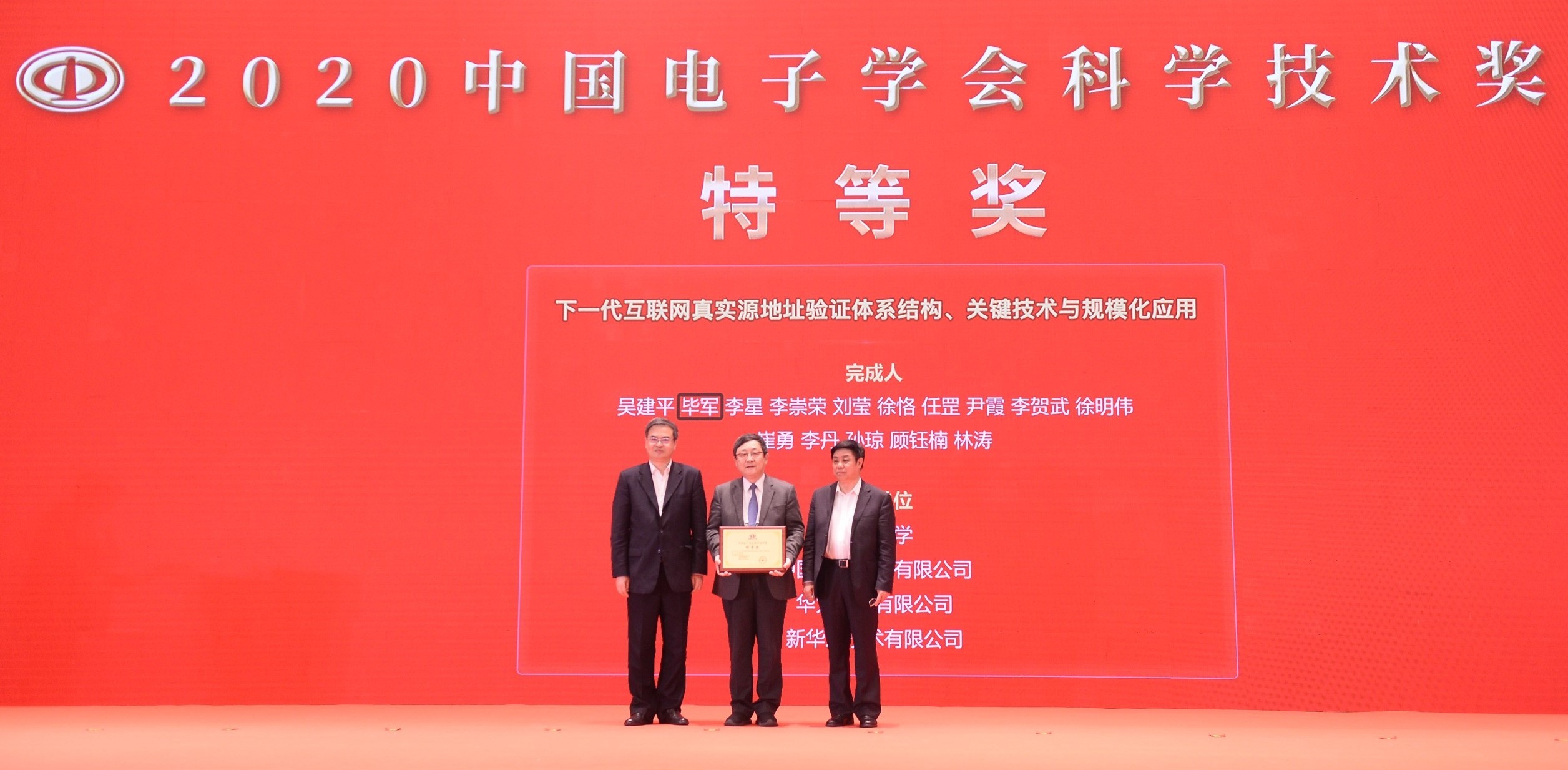
Recently, the project of "next generation Internet real source address verification architecture, key technologies and large-scale applications" led by Tsinghua University was awarded the 2020 Special Prize of Science and Technology by the Chinese Institute of Electronics.
Zhang Jun, vice president of Chinese Institute of Electronics and academician of Chinese Academy of Engineering, said that the Internet architecture is the key technology of the Internet. The project addresses the lack of trusted source addressing in open Internet architectures, which is a major technical issue globally. The SAVA project addresses this based on an IPv6-based source address verification architecture, which supports the accurate location and address traceability of Internet real source addresses. SAVA utilizes the key security and trusted technology of the next generation Internet architecture, and has achieved large-scale and industrial application in the national important departments and key industry networks, and achieved significant social and economic benefits.
For a long time, the Internet had lacked effective real source address verification. In 2005, Tsinghua University proposed SAVA, designing and implementing the source address verification algorithm at three levels of access, intra domain and inter domain, and carrying out small-scale experiments and deployment.
The SAVA architecture design was mainly completed by Jianping Wu, Jun Bi, Xing Li and Chongrong Li. Jianping Wu, academician of the Chinese Academy of Engineering and professor of Tsinghua University, is responsible for the overall design, puts forward the core design ideas and makes creative contributions to the core innovation.
In 2008, the IETF approved SAVA via Internet standard RFC 5210, which is the first non-information RFC of China, and initiated the establishment of the first IETF working group SAVI.
SAVA has produced an important academic influence at home and abroad, and has been highly praised by famous scholars in the field of Internet architecture and network security, as well as mainstream scientific journals in the field. It has been featured by the famous British magazine "New Scientist" and the international authoritative information security magazine "Info Security".
Based on the research on SAVA, the Tsinghua University team published 92 important academic papers, authorized 40 national invention patents, 2 American invention patents, and passed 7 IETF Internet standards RFC and 11 standards of the China Communication Standardization Association.
Now, the industrialization of project achievements has achieved remarkable results. It is reported that SAVA has been applied to more than 50 types of products of Huawei, Xinhua 3, ZTE, Ruijie, Digital China and other companies, with a cumulative economic benefit of more than 16.9 billion yuan, and has been deployed on a large scale in the CERNET2 backbone network, IPv6 campus networks, Chinese Academy of Sciences IPv6 network, China Telecom's IPv6 experimental network, and the CNCERT IPv6 experimental network.
The annual science and technology award of the Chinese Institute of Electronics mainly awards the collectives and individuals who have made outstanding contributions in scientific research, technological innovation and development, popularization and application of scientific and technological achievements and industrialization in the field of electronic information. The award-winning projects can be recommended and nominated by Chinese Institute of Electronics for inclusion in the national science and technology awards.
Those first prize projects whose research achievements have had global impact, that have played a particularly important role in promoting scientific and technological progress and industrial development, and have achieved significant social or economic benefits can be rated as special prizes according to the situation. In 2020, the Chinese Institute of Electronics awarded 1 special prize, 24 first prizes, 19 second prizes and 24 third prizes, and the annual innovation team award was vacant.




